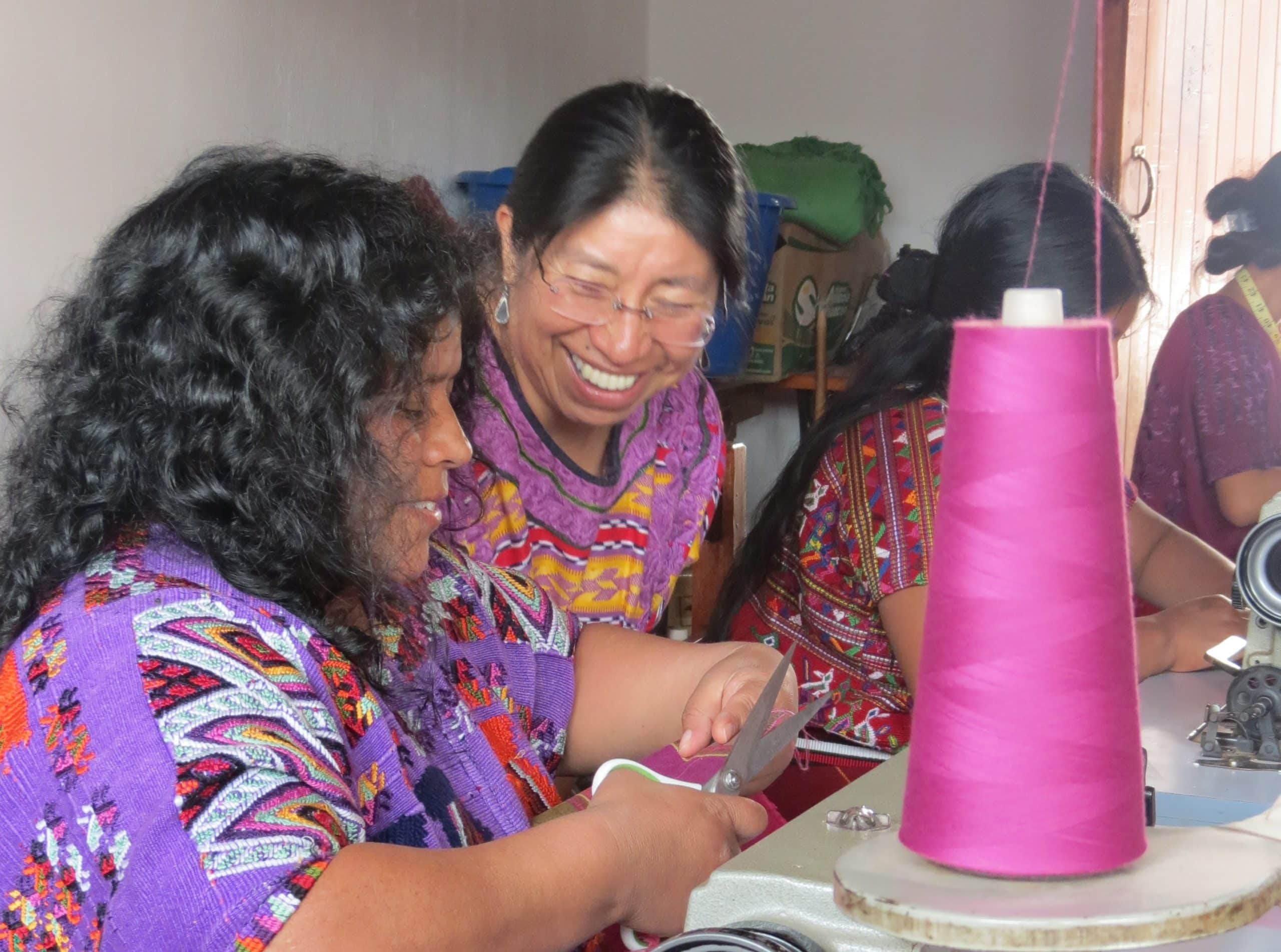Last week, Root Capital impact officer Asya Troychansky wrote about the transformative impact that Root Capital’s financial management training has had on ACMUV, an all-women microcredit and handcraft association in Guatemala.
This week, Estuardo Fuentes Gutiérrez, our Guatemala-based impact liaison, shares a recent conversation with Margarita Chojolán, regional training coordinator in Central America, about how we adapted our typical training to better serve women– and what we learned in the process.

Margarita Chojolán (right) with the women of ACMUV
Estuardo: What was different about working with ACMUV?
Margarita: The first challenge we faced was figuring out how to break the long-held notion that women shouldn’t leave their homes for training. We needed to find a way to make it easier for women to leave their houses and their communities to participate in financial trainings in the cities of Antigua and Quetzaltenango.
How did you get past this stigma against women leaving their homes?
We offered to help mothers with childcare. We allowed each woman to bring along someone to care for the children during the training, and we covered all associated costs. This meant we had to invest more resources in food, housing, and transportation for the caretakers. The result was significantly higher participation.
When Juana Hu Mateo, the ACMUV general coordinator, began coming to trainings, she was pregnant, and between the first and second training, her baby was born. This didn’t stop her from participating. I remember that we took the large cardboard box that we’d used to carry the training materials and converted it into a “crib” so that Juana could participate in the trainings while being close to her baby.
The other thing our team decided to do was to deliberately motivate women to participate. This meant that when we first visited ACMUV, we talked about the importance of women’s participation and how the training would help to improve their business’s performance while also strengthening their individual skills. Through this process, we looked to break women’s notion of “I can’t.” Helping the women visualize their potential and skills from the beginning served as a point of departure for the workshops. We then reinforced this process through the workshops themselves. We invited the women to sit in the circle (not outside of it, as often happens), encouraged them to participate, and celebrated when they did.
Did you adapt the training process at all? If so, how?
The main goal was to make women feel comfortable “digesting” the content of the training. To do this, we recognized each and every idea the women voiced, respecting the way in which each woman expressed herself and the language in which she chose to express herself. We encouraged the women to use their native language (Ixil) so that language was not a barrier to their participation.
We also made difficult topics accessible by relying on different frames of reference, using the women’s knowledge base as a point of departure. For example, we explained the process of the credit cycle by comparing it to preparation of meals the women cooked.
Finally, in each of the trainings, we helped create self-help networks through which women would help one another and in a few cases men would help women. These networks strengthened empathy between female and male participants, and helped them to better absorb the trainings.
For those who want to know more about the engagement itself, could you tell us more about the trainings?
The training for ACMUV was part of Root Capital’s Financial Advisory Services program. In this case, the holistic training program focused on financial fundamentals in business and managing their internal credit system (i.e. to extend microloans to the female members).
With ACMUV, as with other groups, we conducted a diagnostic to assess the business’s financial health, management capacity, and internal credit system, which yielded a baseline rating of “C” on a scale from “E” (very poor) to “AA” (excellent). Based on these results, we identified areas for improvement and created a customized financial training plan that focused on helping them learn accounting software and manage their internal credit system.
The ambitious plan required 40 days of training over a two-year period in order to achieve the desired impact. We’ve now completed that training, and the process has improved the women’s knowledge and skills. The final diagnostic showed a near 30 percent increase – from a “C” to a “BB” – overall, and a 67 percent increase – from a “C” to a “AA” – in the assessment of the women’s internal credit system.
One important improvement was automating the group’s accounting and internal credit system processes. Now the accountant, Magdalena Brito, and the credit promoters use software that makes their work more efficient. However, it’s important to note that there is much room for improvement.
What were the key takeaways from the ACMUV training that you think would be useful to other partners delivering training to women?
First, it’s important to remember that improving women’s integration could require additional resources, for example paying for childcare.
Second, we need to apply the principle of empathy, which means getting to know in detail the social, economic, and cultural context of a specific community, and women’s place within it, and adjust programs accordingly to this context.

